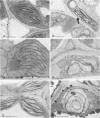Abstract
Streptomycin enhances the synthesis of anthocyanins and inhibits the synthesis of chlorophylls and the development of chloroplasts in dark-grown seedlings of cabbage (Brassica oleracea), mustard (Sinapis alba), tomato (Lycopersicon esculentum), and turnip (Brassica rapa) exposed to prolonged periods of irradiation in various spectral regions. These results suggest that the contribution of photosynthesis to light-dependent high irradiance reaction anthocyanin synthesis in seedlings of cabbage, mustard, tomato, and turnip is minimal, if any at all. So far, phytochrome is the only photoreceptor whose action in the control of light-dependent anthocyanin synthesis in seedlings of cabbage, mustard, tomato, and turnip has been satisfactorily demonstrated.
Full text
PDF
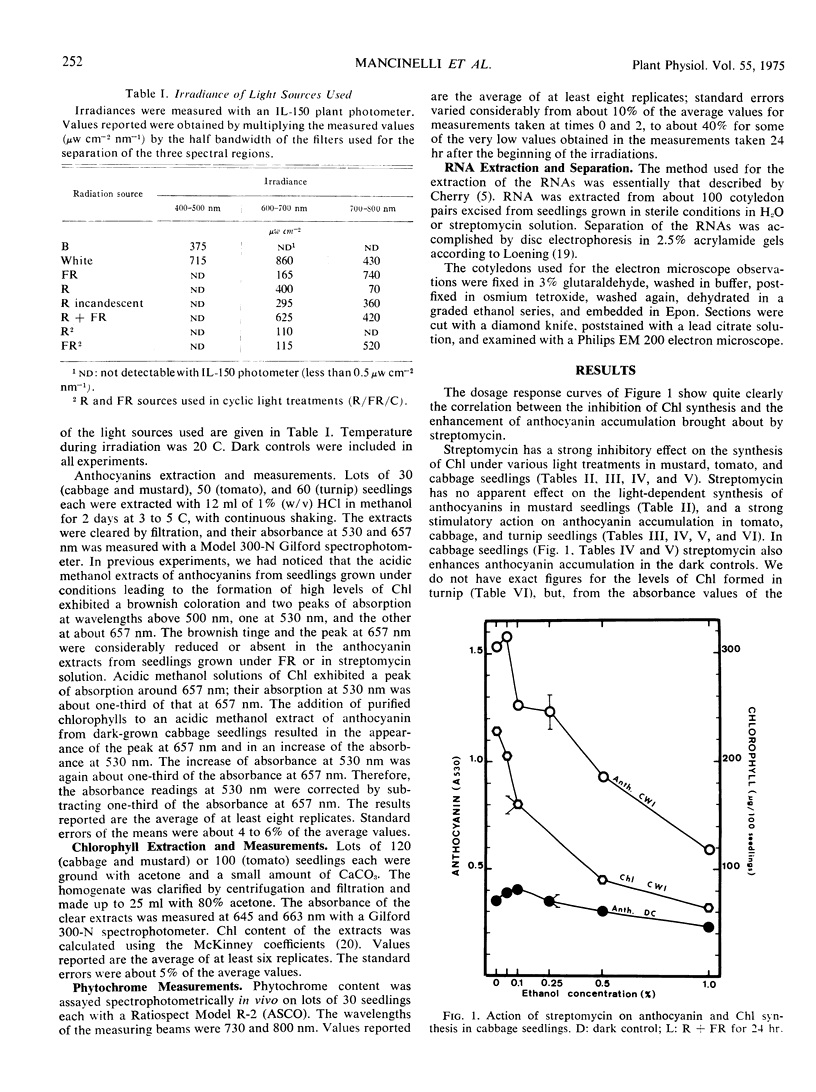
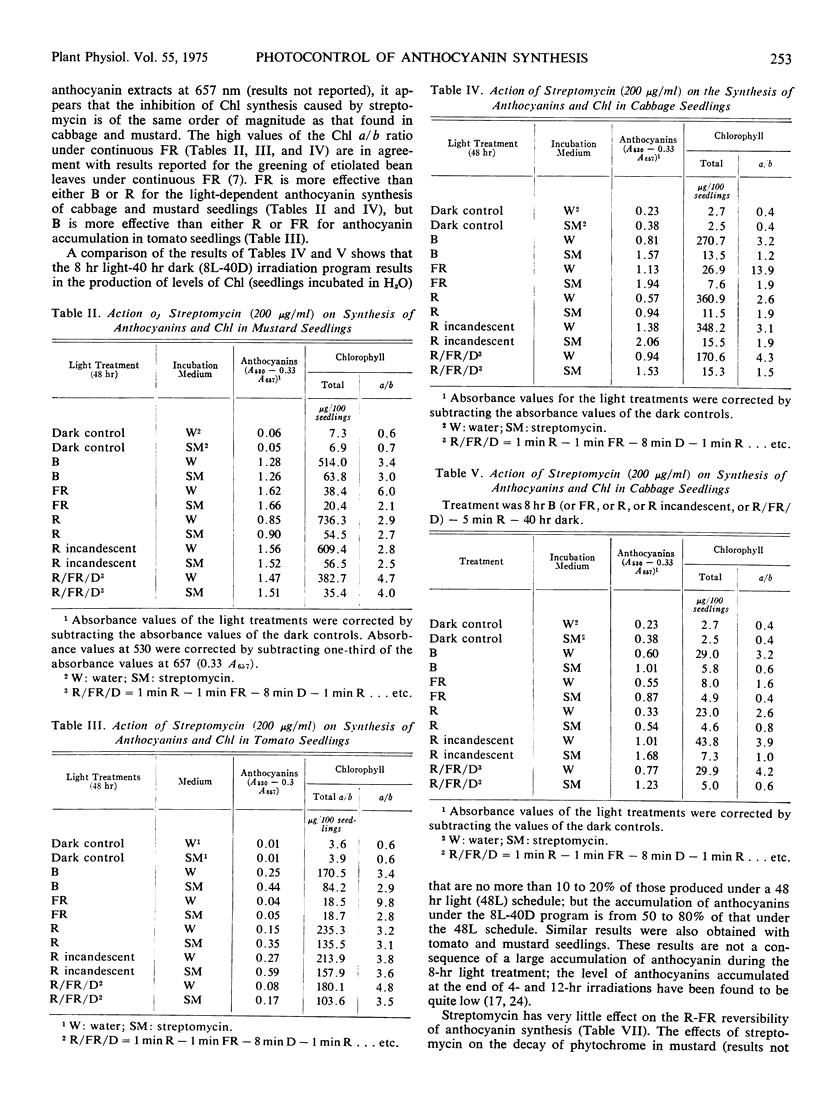
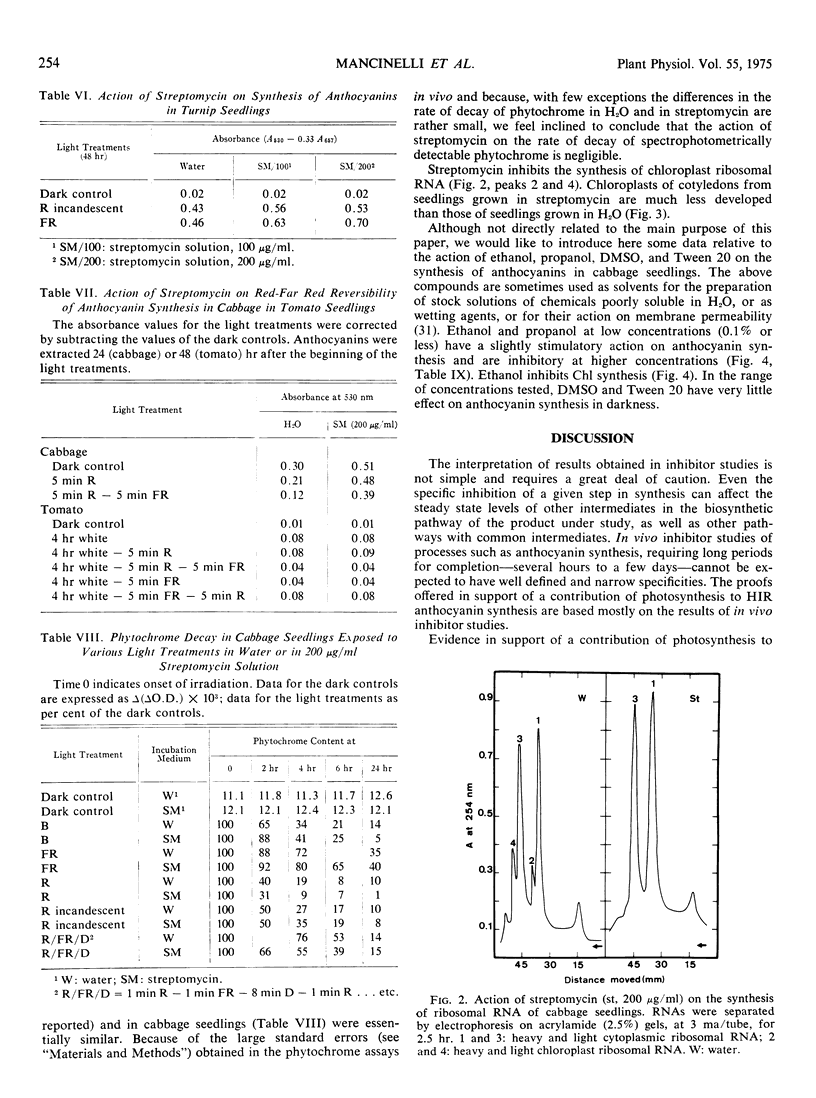
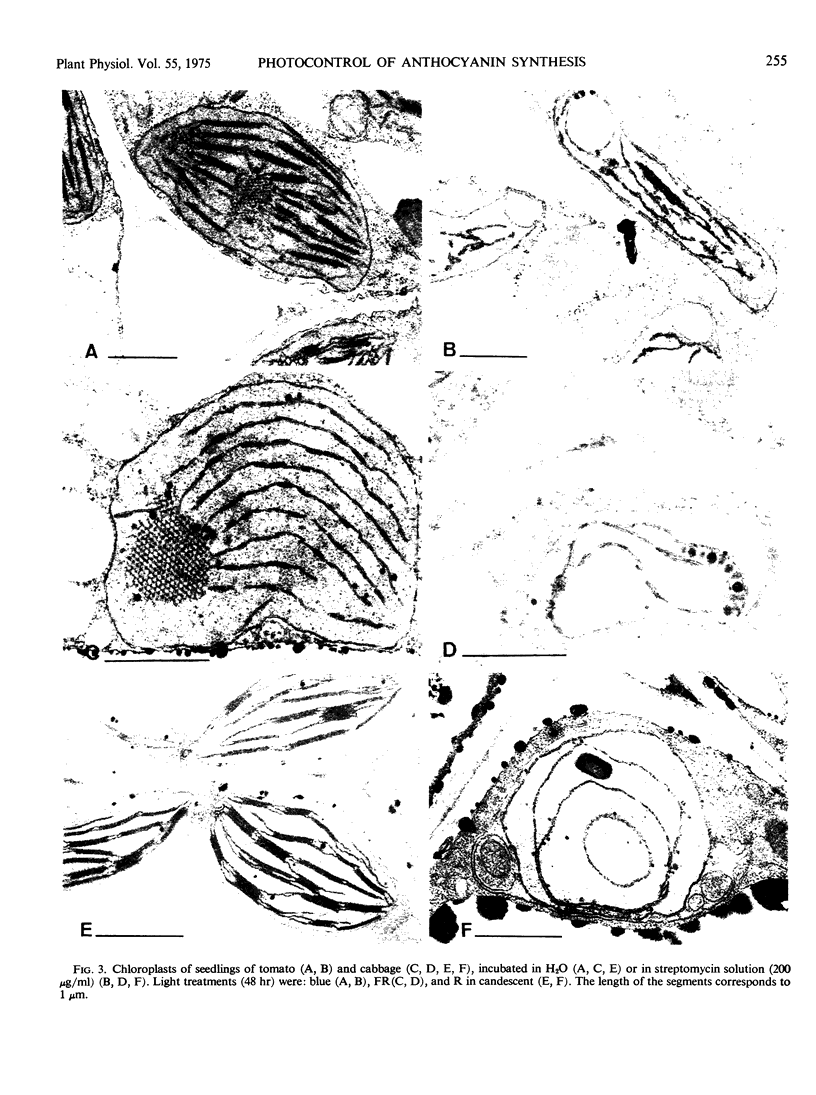
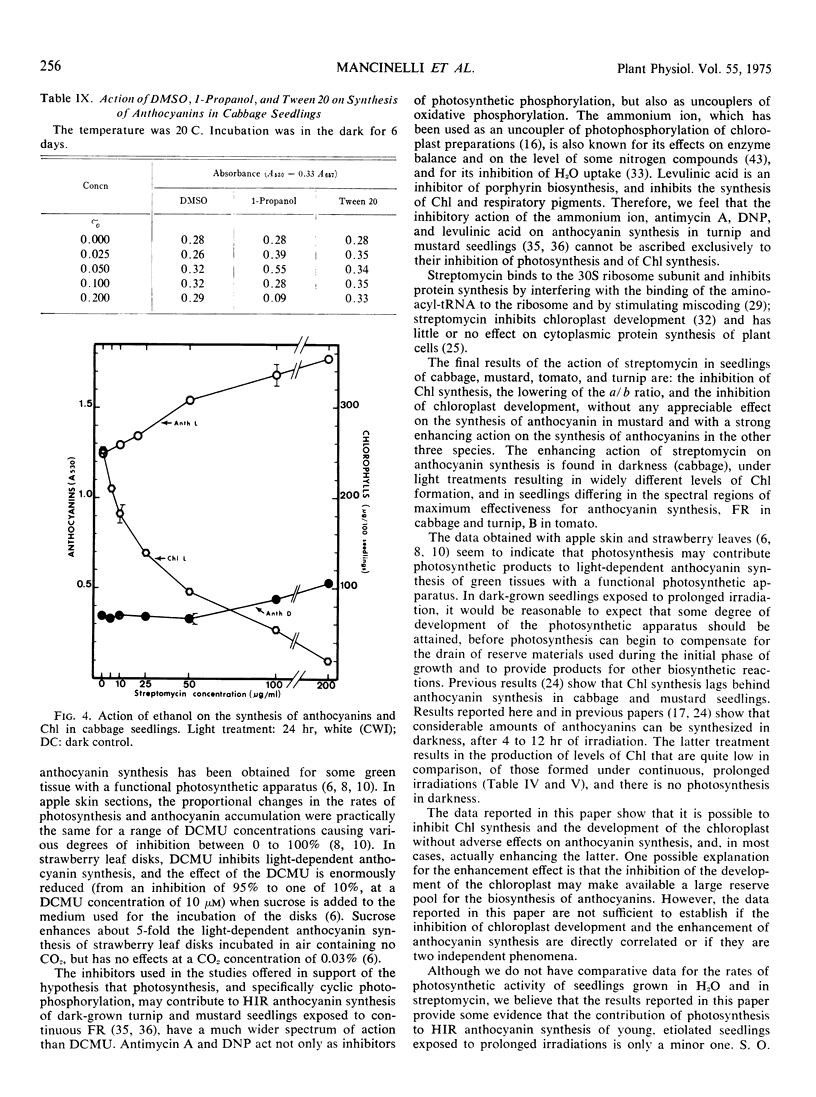
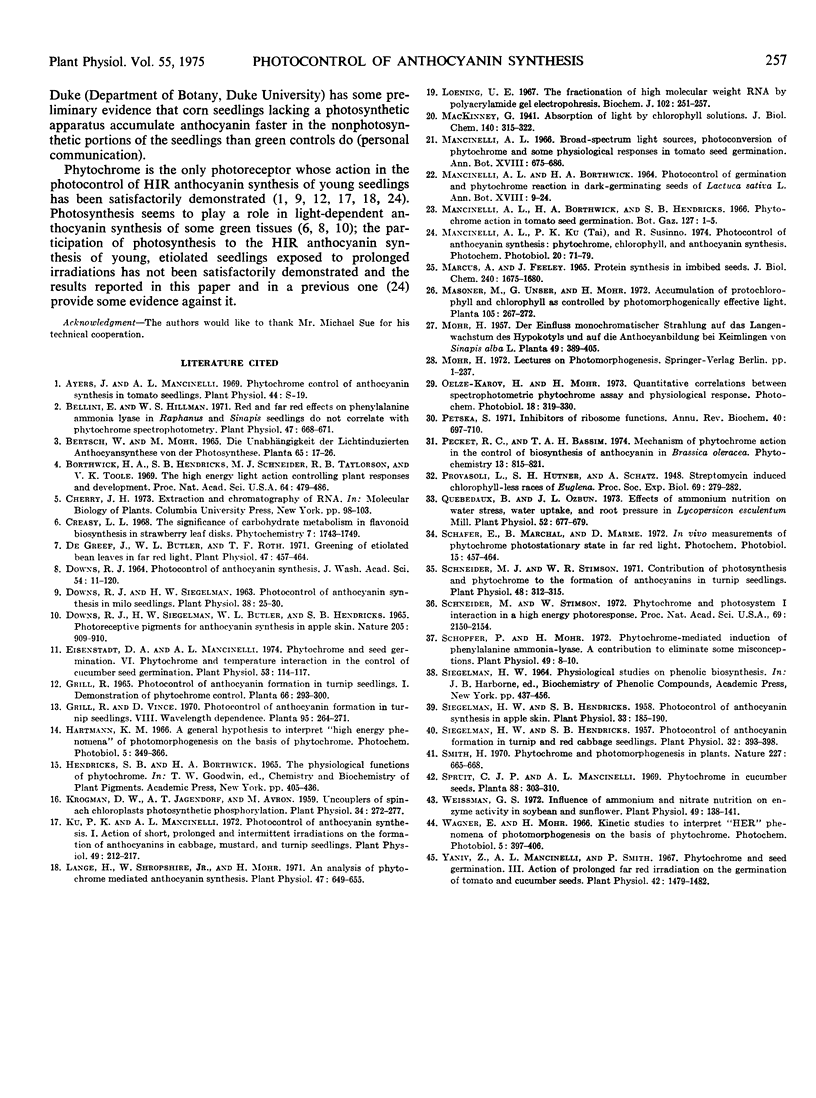
Images in this article
Selected References
These references are in PubMed. This may not be the complete list of references from this article.
- Bellini E., Hillman W. S. Red and far red effects on phenylalanine ammonia-lyase in raphanus and sinapis seedlings do not correlate with phytochrome spectrophotometry. Plant Physiol. 1971 May;47(5):668–671. doi: 10.1104/pp.47.5.668. [DOI] [PMC free article] [PubMed] [Google Scholar]
- Borthwick H. A., Hendricks S. B., Schneider M. J., Taylorson R. B., Toole V. K. The high-energy light action controlling plant responses and development. Proc Natl Acad Sci U S A. 1969 Oct;64(2):479–486. doi: 10.1073/pnas.64.2.479. [DOI] [PMC free article] [PubMed] [Google Scholar]
- De Greef J., Butler W. L., Roth T. F. Greening of etiolated bean leaves in far red light. Plant Physiol. 1971 Apr;47(4):457–464. doi: 10.1104/pp.47.4.457. [DOI] [PMC free article] [PubMed] [Google Scholar]
- Downs R. J., Siegelman H. W. Photocontrol of Anthocyanin Synthesis in Milo Seedlings. Plant Physiol. 1963 Jan;38(1):25–30. doi: 10.1104/pp.38.1.25. [DOI] [PMC free article] [PubMed] [Google Scholar]
- Eisenstadt F. A., Mancinelli A. L. Phytochrome and Seed Germination: VI. Phytochrome and Temperature Interaction in the Control of Cucumber Seed Germination. Plant Physiol. 1974 Jan;53(1):114–117. doi: 10.1104/pp.53.1.114. [DOI] [PMC free article] [PubMed] [Google Scholar]
- Krogmann D. W., Jagendorf A. T., Avron M. Uncouplers of Spinach Chloroplast Photosynthetic Phosphorylation. Plant Physiol. 1959 May;34(3):272–277. doi: 10.1104/pp.34.3.272. [DOI] [PMC free article] [PubMed] [Google Scholar]
- Ku P. K., Mancinelli A. L. Photocontrol of anthocyanin synthesis: I. Action of short, prolonged, and intermittent irradiations on the formation of anthocyanins in cabbage, mustard, and turnip seedlings. Plant Physiol. 1972 Feb;49(2):212–217. doi: 10.1104/pp.49.2.212. [DOI] [PMC free article] [PubMed] [Google Scholar]
- Lange H., Shropshire W., Mohr H. An Analysis of Phytochrome-mediated Anthocyanin Synthesis. Plant Physiol. 1971 May;47(5):649–655. doi: 10.1104/pp.47.5.649. [DOI] [PMC free article] [PubMed] [Google Scholar]
- Loening U. E. The fractionation of high-molecular-weight ribonucleic acid by polyacrylamide-gel electrophoresis. Biochem J. 1967 Jan;102(1):251–257. doi: 10.1042/bj1020251. [DOI] [PMC free article] [PubMed] [Google Scholar]
- MARCUS A., FEELEY J. PROTEIN SYNTHESIS IN IMBIBED SEEDS. II. POLYSOME FORMATION DURING IMBIBITION. J Biol Chem. 1965 Apr;240:1675–1680. [PubMed] [Google Scholar]
- Quebedeaux B., Ozbun J. L. Effects of Ammonium Nutrition on Water Stress, Water Uptake, and Root Pressure in Lycopersicon esculentum Mill. Plant Physiol. 1973 Dec;52(6):677–679. doi: 10.1104/pp.52.6.677. [DOI] [PMC free article] [PubMed] [Google Scholar]
- Schneider M. J., Stimson W. R. Contributions of photosynthesis and phytochrome to the formation of anthocyanin in turnip seedlings. Plant Physiol. 1971 Sep;48(3):312–315. doi: 10.1104/pp.48.3.312. [DOI] [PMC free article] [PubMed] [Google Scholar]
- Schneider M., Stimson W. Phytochrome and photosystem I interaction in a high-energy photoresponse. Proc Natl Acad Sci U S A. 1972 Aug;69(8):2150–2154. doi: 10.1073/pnas.69.8.2150. [DOI] [PMC free article] [PubMed] [Google Scholar]
- Schopfer P., Mohr H. Phytochrome-mediated Induction of Phenylalanine Ammonia-Lyase in Mustard Seedlings: A Contribution to Eliminate Some Misconceptions. Plant Physiol. 1972 Jan;49(1):8–10. doi: 10.1104/pp.49.1.8. [DOI] [PMC free article] [PubMed] [Google Scholar]
- Siegelman H. W., Hendricks S. B. Photocontrol of Anthocyanin Formation in Turnip and Red Cabbage Seedlings. Plant Physiol. 1957 Sep;32(5):393–398. doi: 10.1104/pp.32.5.393. [DOI] [PMC free article] [PubMed] [Google Scholar]
- Siegelman H. W., Hendricks S. B. Photocontrol of Anthocyanin Synthesis in Apple Skin. Plant Physiol. 1958 May;33(3):185–190. doi: 10.1104/pp.33.3.185. [DOI] [PMC free article] [PubMed] [Google Scholar]
- Smith H. Phytochrome and photomorphogenesis in plants. Nature. 1970 Aug 15;227(5259):665–668. doi: 10.1038/227665a0. [DOI] [PubMed] [Google Scholar]
- Yaniv Z., Mancinelli A. L., Smith P. Phytochrome and Seed Germination. III. Action of Prolonged Far Red Irradiation on the Germination of Tomato and Cucumber Seeds. Plant Physiol. 1967 Nov;42(11):1479–1482. doi: 10.1104/pp.42.11.1479. [DOI] [PMC free article] [PubMed] [Google Scholar]



